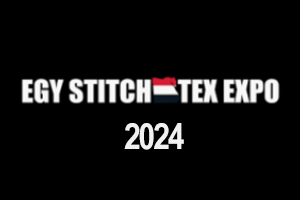Color fastness of textile (Color fastness) is also known as dyeing fastness, dyeing firmness. It refers to the resistance of the color of textiles to various effects during processing and use. According to the specimen discoloration and undyed lining fabric staining to assess the color fastness level. Textiles in its use will be subjected to light, washing, ironing, sweat, friction and chemicals and other external effects, some printed and dyed textiles are also after a special finishing process, such as resin finishing, flame retardant finishing, sandwashing, brushing, etc., which requires that the color of printed and dyed textiles to maintain a certain degree of fastness relative.
Common test methods for color fastness of textiles
The most commonly used are friction resistance, washing resistance, light resistance, sweat resistance, ironing resistance, weather resistance and other items. In practice, it is mainly based on the end use of the product and product standards to determine the test items, such as knitted underwear to measure the fastness to perspiration, and outdoor textiles (such as parasols, light box fabrics, canopy materials) should be tested for color fastness to weather.
Color fastness to sunlight
When textiles are used, they are usually exposed to light, which can destroy the dyestuffs and lead to the well-known "fading", making colored textiles change color, usually lightening, darkening, and in some cases, changing the color light, so it is necessary to test the color fastness. The color fastness to sunlight test is to put the specimen and the blue wool standard cloth with different fastness levels together in the sunlight exposure under the specified conditions, and compare the specimen with the blue wool cloth to assess the color fastness to sunlight, and the higher the level of the blue wool standard cloth, the more light-resistant it is.
Color fastness to rubbing
Put the specimen on the rubbing fastness tester, and rub the standard rubbing white cloth with it for a certain number of times under a certain pressure, each group of specimens need to do dry rubbing color fastness and wet rubbing color fastness. The color stained on the standard friction cloth is graded by gray card, and the grade obtained is the color fastness to friction measured. The color fastness to rubbing requires both dry and wet rubbing tests, where all colors on the specimen are rubbed.
Color fastness to washing
The specimen is sewn together with a standard appliqué fabric, washed, cleaned and dried, and laundered under suitable conditions of temperature, alkalinity, bleaching and rubbing, so that the test results are obtained in a shorter period of time. The friction action in between is accomplished by tumbling and impacting of small bath ratios and appropriate number of stainless steel beads, which are rated with a gray card to produce test results. Different test methods have different temperatures, alkalinity, bleaching and friction conditions and specimen sizes, which are selected according to test standards and customer requirements.
Color fastness to dry cleaning
The same color fastness as water washing, except that water washing has been changed to dry cleaning.
Color fastness to perspiration
Sew the specimen together with the standard lining fabric, put it in the sweat solution treatment, clip it on the color fastness to perspiration meter, put it in the oven at a constant temperature, and then dry it, and then grade it with the gray card to get the test result. Different test methods have different ratios of perspiration solution, different specimen sizes, different test temperatures and times.
Color fastness to non-chlorine bleaching
The color fastness to non-chlorine bleaching is assessed by the degree of color change of the fabric after washing under non-chlorine bleaching washing conditions.
Color fastness to pressing
After the dry specimen is covered with cotton lining fabric, it is pressed for a certain period of time in a heating device with specified temperature and pressure, and then the color change of the specimen and the staining of the lining fabric are evaluated with a gray sample card. The color fastness of hot pressing has, moisture pressure, wet pressure, specific according to different customer requirements and test standards to choose the test method.
CONTACT US
UTS INTERNATIONAL CO., LTD
T: +86 0596-7686 689
Mob: +86 152 6060 5085
Web: www.utstesters.com | www.utstextiletester.com
Email: hello@utstesters.com

 en
en ru
ru es
es pt
pt ar
ar







 IPv6 network supported
IPv6 network supported online service
online service



